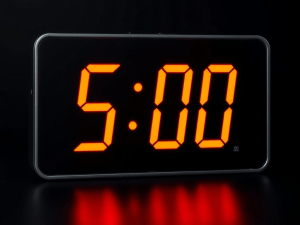Start Using Nostalgia to Fuel Your Passions in 4 Steps
One minute, you’re trying to figure out dinner, and the next, you’re eight years old, eating popsicles on the front porch like it’s the best day ever. Now harness it.
You ever catch a smell, hear a song, or touch something and feel like you’ve stepped into a time machine? One minute, you’re trying to figure out dinner, and the next, you’re eight years old, eating popsicles on the front porch like it’s the best day ever. It’s wild how a tiny detail can unlock a memory so vivid it feels like it just happened.
That’s not just some random quirk of your brain. It’s how you’re built. And here’s the secret no one talks about—you can actually use that. Those moments where the past sneaks up on you aren’t just nostalgia trips. They’re tools you can use to create, connect, and even understand yourself better.
Even the memories that sting a little can be transformed into something meaningful if you let them. You just have to know how to look at them.
What’s Happening When You Get “Taken Back”
When something triggers a memory like that, it’s not just your brain pulling an old file. It’s activating a whole network of sensory inputs. That smell, sound, or texture is connected to a moment in your life so vividly that it brings back not only the memory itself but all the feelings tied to it. Scientists call this associative memory.
This is why nostalgia is so powerful. It’s not just about the thing you’re remembering. It’s about how it made you feel. Maybe it reminds you of when life felt simpler or more exciting. Maybe it’s tied to a version of yourself you miss. Whatever it is, that emotional rush can be more than just a passing thought. It can be fuel.
How to Turn Nostalgia Into Something Powerful
You don’t have to let these memory flashes just come and go. You can use them. Here’s how.
1. Notice Your Triggers
Pay attention to what sets those memories off. Is it the smell of cut grass? The opening notes of a song you loved in high school? The feel of warm sunlight on your skin? Write it down. These triggers are like little breadcrumbs leading you to something deeper.
2. Unpack the Feeling
Ask yourself why this moment hits you so hard. Is it tied to freedom? Comfort? Excitement? Figure out the feeling at the core of it, and then think about how you can use that in whatever you’re working on. For example, if it’s tied to joy, how can you bring more of that into your work, your relationships, or even your day-to-day choices?
3. Build a Toolkit
Keep reminders of these feelings close. Create playlists, keep old photos, or collect objects that inspire you. These aren’t just keepsakes. They’re tools you can use to spark creativity and connection when you need it most.
4. Share the Experience
Here’s the magic of nostalgia—it’s not just your experience. It’s universal. When you infuse your work or ideas with those feelings, other people will connect with them too. Nostalgia opens the door for others to remember their own stories while connecting with yours.
Five Minutes to Get Started
Life moves fast, and it’s easy to overlook the little things that ground you. But those memory sparks can remind you who you are, where you’ve been, and what matters most. If you’re feeling stuck, let them guide you.
Take five minutes today to try this:
• The next time a memory hits you, write down what triggered it.
• Describe the feelings it brought up.
• Think about how you can use those feelings in something you’re working on, even if it’s just for fun.
Then do something with it. Turn it into a project, an idea, or just a moment to reflect. Nostalgia isn’t just about old TV shows or childhood snacks. It’s a tool, a resource, and a connection to the best parts of you. Use it to build something amazing.






